Excerpts from Jim Conrad's
Naturalist Newsletter
from the March 8, 2019 Newsletter issued from Rancho Regensis north of Valladolid, Yucatán, MÉXICO;
elevation ~40m (~130 ft), N~20.876°, W~88.170°
AFRICAN FOXTAIL GRASS
Last Sunday as I biked between the rancho and Temozón, at the road's edge a certain attractive, knee-high grass leaned over the pavement, as shown below:
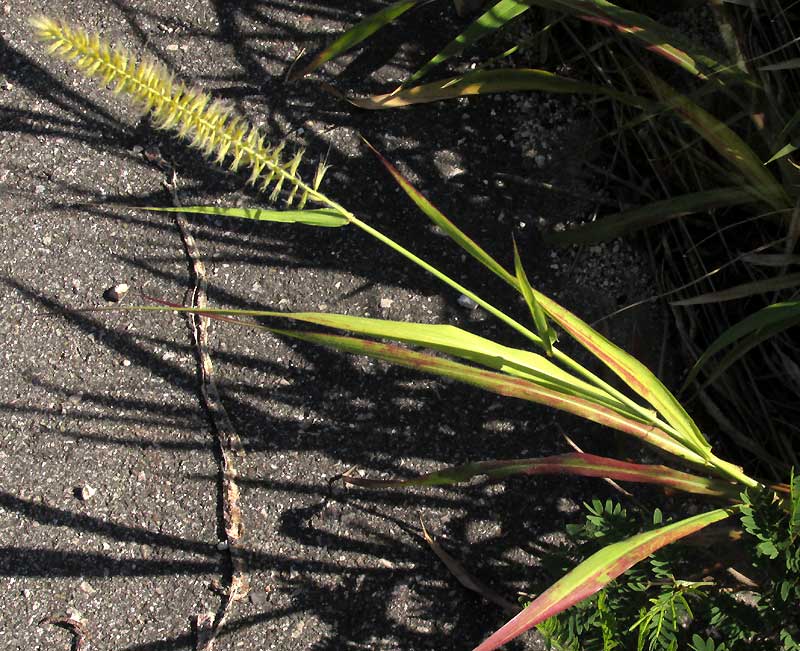
From the bike it looked like one of several species of commonly occurring foxtail grass, genus Setaria, but it was unlike any I'd seen. I figured I'd better photograph its main field marks. The flowering head is shown closer up below:
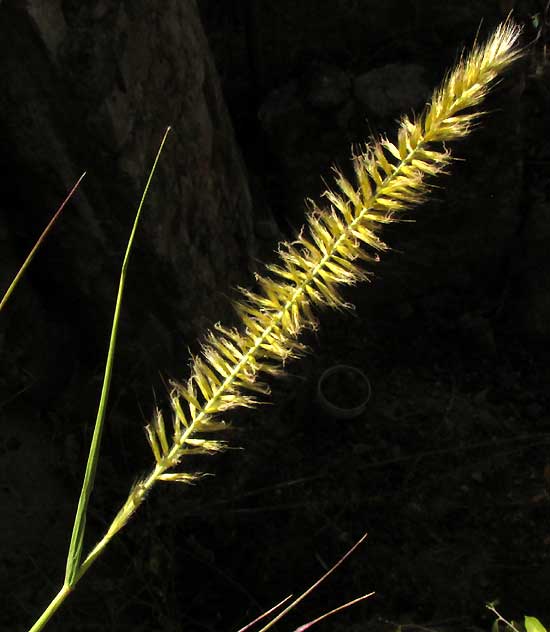
A close-up of a spikelet cluster arising from a very hairy rachis is shown below:
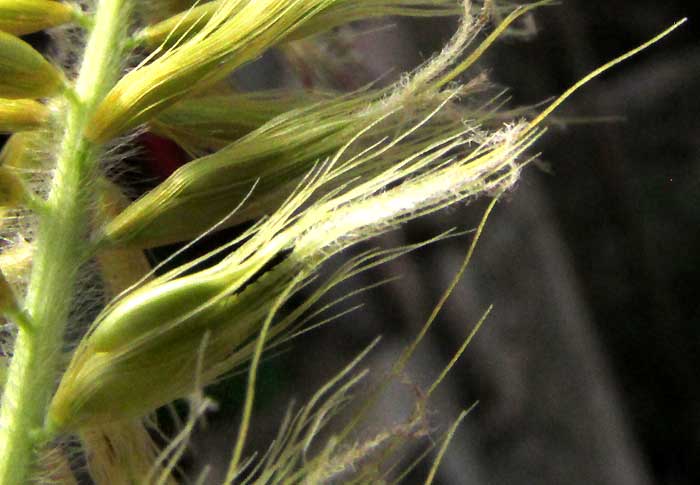
In that picture, the long, fuzzy, white items in the image's center are pollen collecting stigmas. Also, note that each cluster consists of more than one spikelet, the spikelets on short stems of different lengths. And at the bases of each cluster, several long, stiff, hair-like bristles arise. Later, at the hut, I photographed a cluster of three spikelets better showing how the bristles arise at the base, shown below:
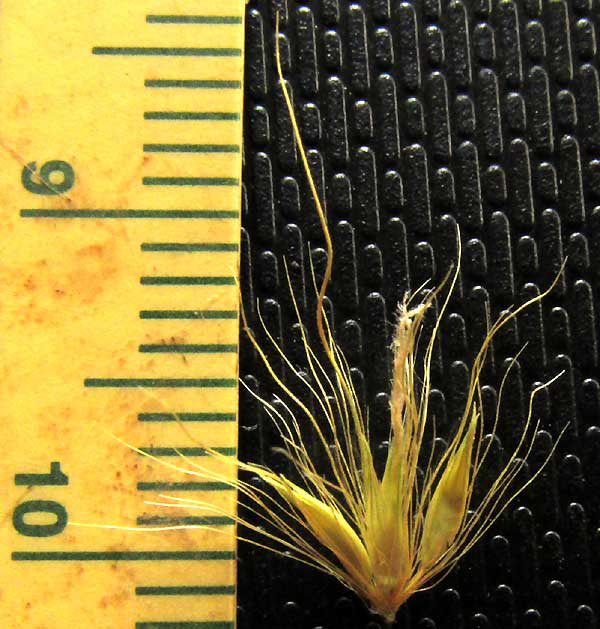
This grass species occurred only in one spot along the highway, but there numerous plants in different states of maturity were evident. One plant had lost most of its spikelets, leaving a hairy rachis behind on which only a few tufts of bristles remained, as shown below:
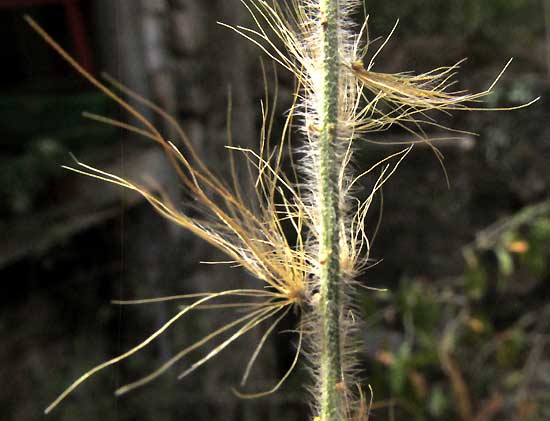
The grass's leaf blades bore long, soft hairs on their upper surfaces, shown below:
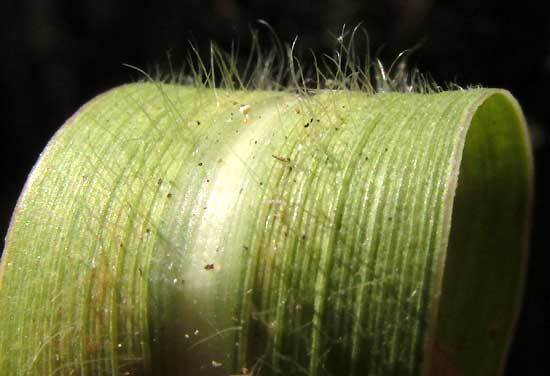
Finally, below you can see what the ligule looked like where the blade connected with the stem:

This grass turned out to be CENCHRUS CILIARIS, bearing many names in English and other languages. The name seeming most appropriate to me is African Foxtail Grass, because it's native to Africa as well as tropical Eurasia, and looks so much like Foxtail Grass. It's naturalized in much of the rest of the world's tropics and semitropics, spread so widely because it makes good permanent livestock pastures in semi-arid places, plus hay and silage can be produced from it.
I was surprised that this was a member of the genus Cenchrus, because that's the Sandbur genus, sandburs being those grasses producing flowers and fruits encased in pea-sized, hard-spined cases forming burrs that can severely puncture a foot or an animal's mouth. Once those burrs are stuck into you, they're hard and painful to remove. You can see a close-up of such a spiny burr, on a Cenchrus spinifex encountered on the Yucatan's northern coast, at www.backyardnature.net/n/13/131027sa.jpg
For many years botanists didn't recognize our Cenchrus ciliaris as a sandbur, calling it Pennisetum ciliare. However, now with genetic sequencing, it's understood that the bristles at the spikelet cluster bases of Cenchrus ciliaris are strongly analogous to spines on other Cenchrus species.
It took awhile to be convinced that this was really Cenchrus ciliaris, because details of our spikelet clusters differed in small ways from features seen in pictures on the Internet. Especially, in most clusters of our plants, the inner bristles may be conspicuously widened at their bases on one or two bristles, while in most pictures on the Internet several bristles spread very broadly. Also, most clusters on the Internet are a bit purplish while ours a "straw colored." However, the species is recognized as being very variable, or "polymorphic," over its very wide distribution area, and I can't find any other species it could be.